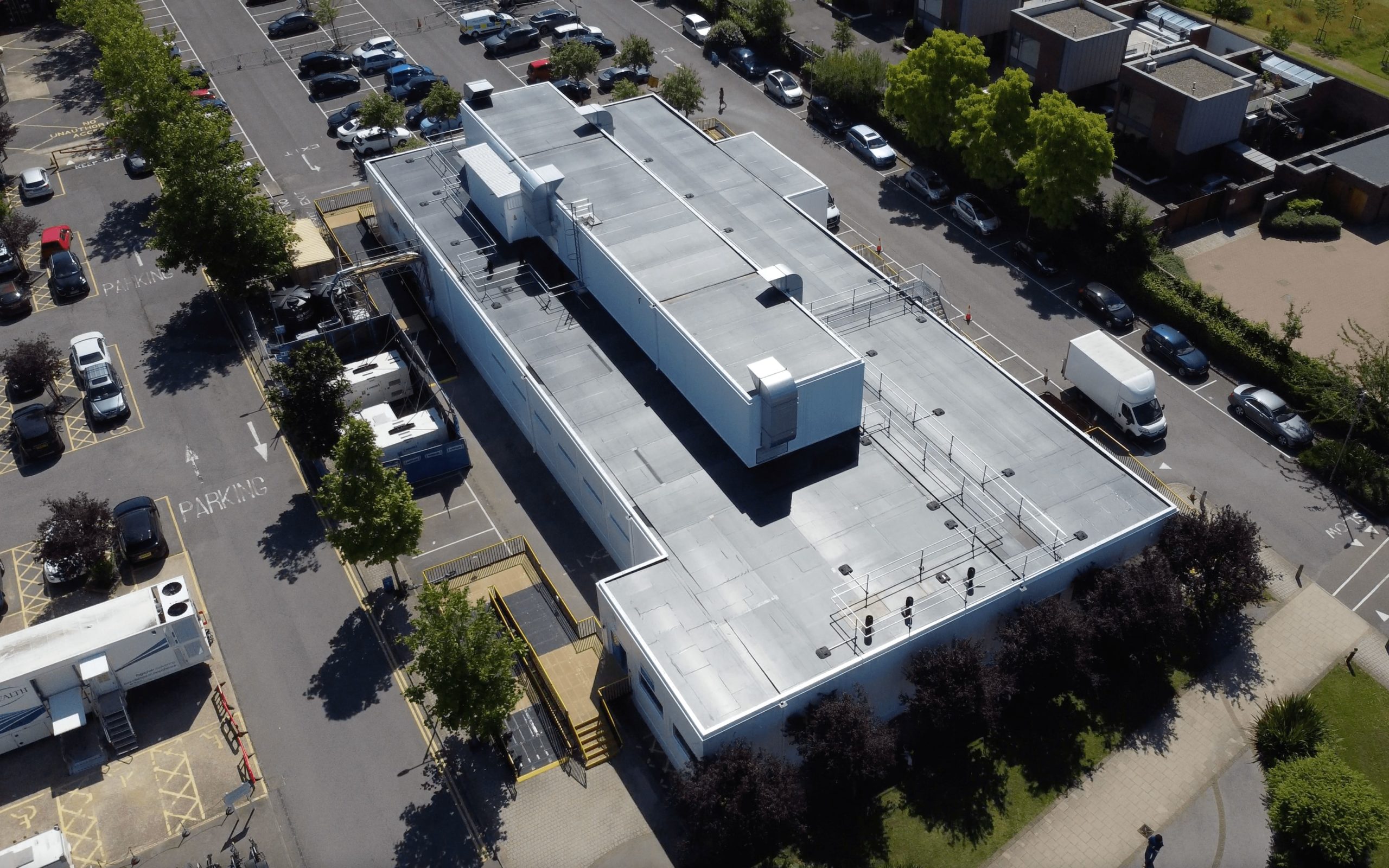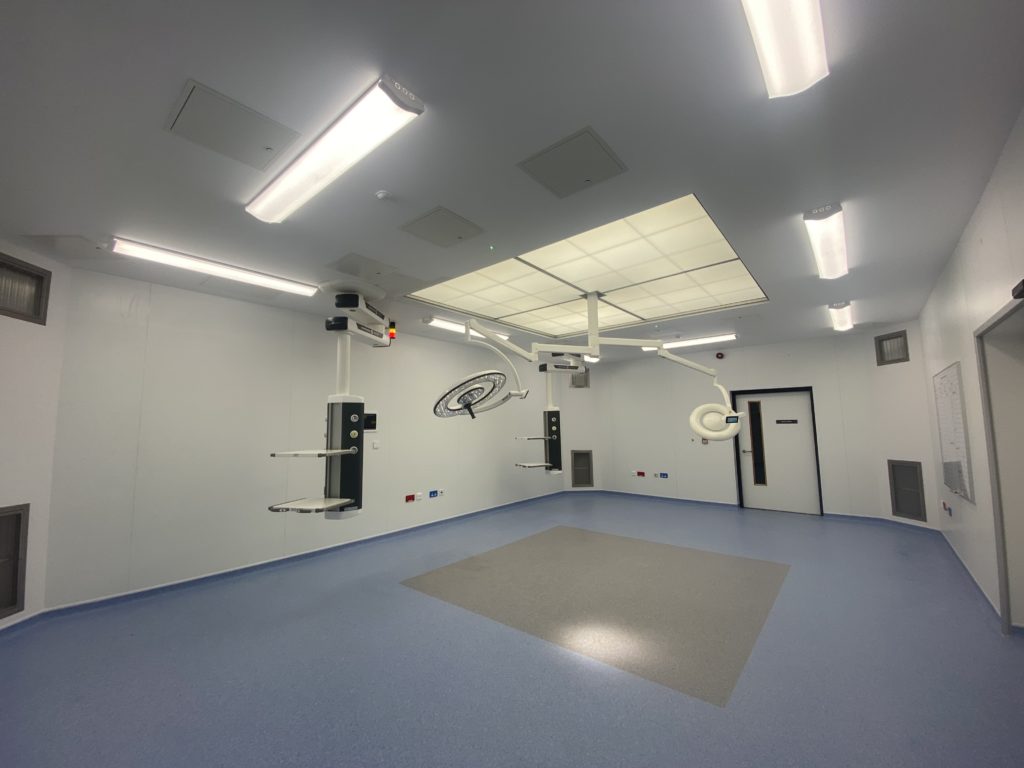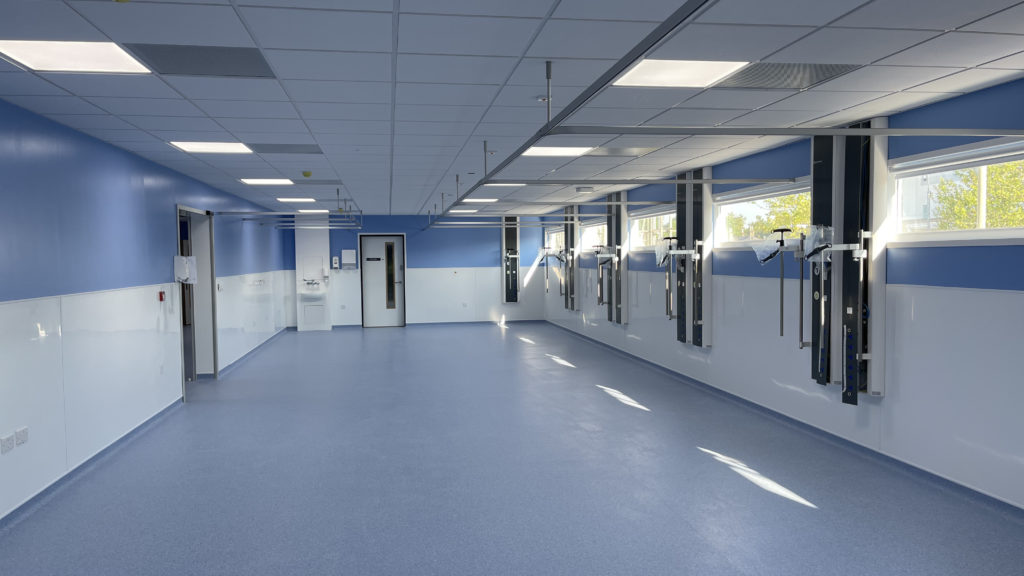Modular surgical hubs enable regionally tailored care

Surgical hubs can be up and running quickly to tackle elective care backlogs. They also have the potential to focus on local population needs and address health inequalities made worse by the pandemic.
The recently announced additional funding to tackle the elective care backlog provides an opportunity to put in place well-planned solutions that will increase resilience in the long run rather than as a temporary measure. Stand-alone surgical hubs, which separate acute and elective pathways, are such a solution.
At the same time, the elective surgery backlog is increasing each day and there is no time for lengthy planning processes; the catch-up must begin immediately to prevent the backlog becoming even larger. The ideal capacity solution should be quick to implement, flexible and customisable to address local requirements, regional inequalities and other variations in healthcare delivery. Surgical hubs built using specially designed modules – and placed in strategic locations to ensure the greatest impact on the elective care backlog – would add substantial capacity and could be the answer to many of the challenges the NHS currently faces.
Turning the tide on elective care
The pressure on the NHS to manage the waiting list for routine care has never been greater. According to the latest available data, 5.7 million people were on the elective surgery waiting list in August 2021, the highest number since records began in 2007. Of the more than 1.7 million people who had been waiting over 18 weeks for surgery, about five per cent had been waiting longer than 52 weeks, although this share had thankfully fallen from a peak of almost nine per cent earlier in the year.
Not only do we have a substantial backlog dating back to spring 2020, when elective care was initially suspended, the number of people waiting continues to rise markedly each month despite significant eff orts to address the issue. Even the Secretary of State for Health and Social Care has admitted that the NHS waiting list could reach 13 million if urgent action is not taken.
Under its new Build Back Better plan for health and social care, the government recently committed an additional £9 billion to support the NHS to increase elective care activity, with the aim of reaching around 130 per cent of pre-pandemic levels by 2024/25. Once the NHS has recovered, the government wants activity to remain at about 10 per cent higher than under the NHS Long Term Plan.
However, even if activity levels were to reach well above 100 per cent of pre-pandemic capacity, catching up will take time. Worryingly, as of August, activity was not increasing, rather the opposite; admissions fell by 11 per cent in August, following a decline of 6 per cent in July. Despite activity increases seen in the Autumn months, the winter resurgence of Covid-19 will likely limit activity further.
A substantial amount of additional capacity is urgently needed to avert a more serious elective care crisis. Investing in surgical hubs and separating acute and elective care will help protect elective activity during future Covid-19 outbreaks and other disruptive events.
“If a high-spec modular solution is chosen, a surgical hub can be ready to receive patients only a few months after being commissioned”
Lindsay Dransfield, Chief Commercial Officer, Vanguard Healthcare Solutions
All is not equal
Although the entire country has been affected by delays and disruption to elective care, the scale of the problem is not the same everywhere. Even before the pandemic, regional disparities in waits for routine surgery were stark, with access to care increasing at a much slower rate in the most deprived areas. The pandemic has unfortunately made the problem worse.
The parts of the country most severely affected by Covid-19 have also seen waiting lists grow the fastest. For example, the backlog is significantly greater in the north east and north west. Research by the Institute for Fiscal Studies, Harvard University and Imperial College London found that the north west had seen the greatest drop in admissions, with 467,000 operations missed in 10 months, while the south west saw the smallest drop
The NHS backlog also disproportionately affects people in poorer areas. By analysing data from April 2020 to July 2021, The King’s Fund found waiting lists for routine treatments had grown by 55 per cent on average in the most deprived parts of England, compared with 36 per cent in the richest areas. Those in deprived areas were also nearly twice as likely as those in the wealthiest areas to wait more than a year for treatment. Clearly certain areas need more urgent support to meet local healthcare needs.
The effects on patients of long waits are well known. In September a survey commissioned by the charity Independent Age found that more than half of over-50s on the waiting list were in pain daily. Last month, Health and Social Care Secretary Sajid Javid warned that the UK faced “two backlogs” — the waiting list for routine operations and “a social backlog in mental health and public health”.

Addressing healthcare variations
So how will the extra funds be spent? An effective solution for tackling the backlog needs to have a strong focus on addressing health inequalities and allow for tailoring the approach to each region’s specific needs. Speed of implementation is also a key concern.
Although temporary surge capacity can be provided through measures such as extending the working hours of key staff or outsourcing procedures to independent providers, these do not constitute viable longer-term solutions – and certainly will not address the regional disparities that are emerging.
There are reports of record numbers of patients turning to private healthcare due to the long waits for NHS treatments – a recent survey showed that over 20 per cent of adults had sought private healthcare during the pandemic. However, 47 per cent said that paying for private treatment “was not an option” for them.
Aside from the affordability issue, one reason turning to the private sector is unlikely to solve all the NHS’s problems is that patients in different parts of the country do not have the same access to private healthcare, and trusts do not have the same opportunities to outsource treatment to independent providers. An estimated 60 per cent of independent sector capacity is in London and the south east, while opportunities to mobilise extra capacity are more limited in the areas with the greatest need – the north west and the Midlands.
A July report by the Health Foundation highlighted that existing inequalities left parts of the UK more vulnerable to the virus, and in early September this issue was discussed at a House of Commons Health and Social Care Committee oral evidence session about the NHS backlog. During the session, Anita Charlesworth, Director of Research and the REAL Centre (Research and Economic Analysis for the Long term) at the Health Foundation, highlighted the importance of tailoring any solution to the needs of different parts of the country and forming well-thought-out local healthcare plans, rather than using a national one size-fits-all approach.
While it is likely that a combination of measures is needed to make a significant impact on the growing backlog, the approach must be targeted as well as balanced. Well-informed plans and rapid implementation will be key to recovery.
Surgical hubs: the way forward?
The concept of surgical hubs has received widespread attention and support since the Royal College of Surgeons of England (RCS England) published the New Deal for Surgery in May. The RCS England report urges every integrated care system (ICS) in England to identify at least one “surgical hub” where planned surgery can continue safely if the country is hit by another wave of Covid-19, a new variant, severe seasonal flu or other disruptive event.
During the September Health and Social Care Committee oral evidence session, the success of surgical hubs in the London area was emphasised by RCS England President, Professor Neil Mortensen, who credited the Croydon and Redbridge hubs with providing safe surgical capacity to reduce the strain on the NHS. Both sites have achieved 120 per cent of pre-pandemic activity and had an “electrifying” effect on staff morale due to the progress made. NHS England London Medical Director, Dr Vin Diwakar, has also been vocal in his support of the implementation of new surgical hubs across the city.
Implementing surgical hubs brings a wide range of benefits. First and foremost, they provide concentrated additional capacity, with the potential to achieve high volumes of activity, not least through a design optimised for effective patient flow and streamlined operational processes. As a result, they can have a big impact on waiting lists.
They also tend to be more efficient, due to a pooling of expertise and the sharing of resources. A clear separation of urgent and routine pathways reassures patients that it is safe to attend and minimises disruption by helping to protect elective care from outside influences.
Although a surgical hub could be a designated hospital within an ICS, space is often limited in the existing hospital estate and admitting and discharging patients directly to and from the unit might be difficult to achieve. A stand-alone surgery centre at the hospital site – or at a different site with convenient access from neighbouring trusts’ catchment areas – could be the ideal solution.

A tailored, flexible solution
Modules are often used as a short-term temporary solution, but operating theatre modules provide a complete, purpose-built, clinical environment designed to last for over 60 years. They can be assembled in a wide range of configurations and customised to suit the needs of both the provider and the local population. If a high-spec modular solution is chosen, a surgical hub can be ready to receive patients only a few months aft er being commissioned.
The evidence speaks for itself. On Monday 14 June, a surgical hub at St George’s University Hospitals NHS Foundation Trust welcomed its first patients, just four months aft er construction had begun on the facility. The new centre at Queen Mary’s Hospital in Roehampton had been commissioned in direct response to the longer waiting times faced by patients in the area. With four operating theatres and recovery space, the complex has allowed an additional 120 operations per week to be carried out, helping to cut waiting lists for day surgery in south west London.
Vanguard Healthcare Solutions managed the entire build project, providing enabling works including electrical, medical gas, water and drainage infrastructure in addition to the operating theatre modules. The rapid build meant valuable time could be saved and the trust could start catching up on the backlog earlier. The speed at which these facilities can be delivered will be critical in supporting the communities hit the hardest by increasing waiting lists.
The complex stands alone, meaning both surgery and all related patient care happens inside it, with patients coming directly into the facility. Because of its size and the high build quality, the trust is able to deliver a wide range of procedures, including neurology, plastic surgery and ophthalmology. It can also be repurposed for other uses or be turned into an endoscopy suite once the backlog is resolved.
Making a lasting impact
With the extra money now committed over a period of three years, there is an opportunity to put plans in place for more lasting healthcare infrastructure solutions that separate urgent and non-urgent pathways and protect elective capacity in the long run.
Flexible healthcare infrastructure offers an effective and impactful solution; it is quick to implement, minimises disruption to existing activity and can be situated away from the hospital site if required. It enables additional care capacity to be taken to the areas of the UK that need it the most and allows healthcare provision to be tailored to local needs so that backlogs can be tackled effectively at a regional or local level.
The roll-out of surgical hubs using modern methods of construction to rapidly expand surgical capability must form part of the NHS solution to the elective care backlog. However, not all modular buildings are suitable for clinical activity, and collaborating with a specialist provider of sophisticated healthcare facilities, such as Vanguard Healthcare Solutions, is essential.
With the extra money now committed over a period of three years, there is an opportunity to put plans in place for more lasting healthcare infrastructure solutions that separate urgent and non-urgent pathways and protect elective capacity in the long run.
Flexible healthcare infrastructure offers an effective and impactful solution; it is quick to implement, minimises disruption to existing activity and can be situated away from the hospital site if required. It enables additional care capacity to be taken to the areas of the UK that need it the most and allows healthcare provision to be tailored to local needs so that backlogs can be tackled effectively at a regional or local level.
The roll-out of surgical hubs using modern methods of construction to rapidly expand surgical capability must form part of the NHS solution to the elective care backlog. However, not all modular buildings are suitable for clinical activity, and collaborating with a specialist provider of sophisticated healthcare facilities, such as Vanguard Healthcare Solutions, is essential.
